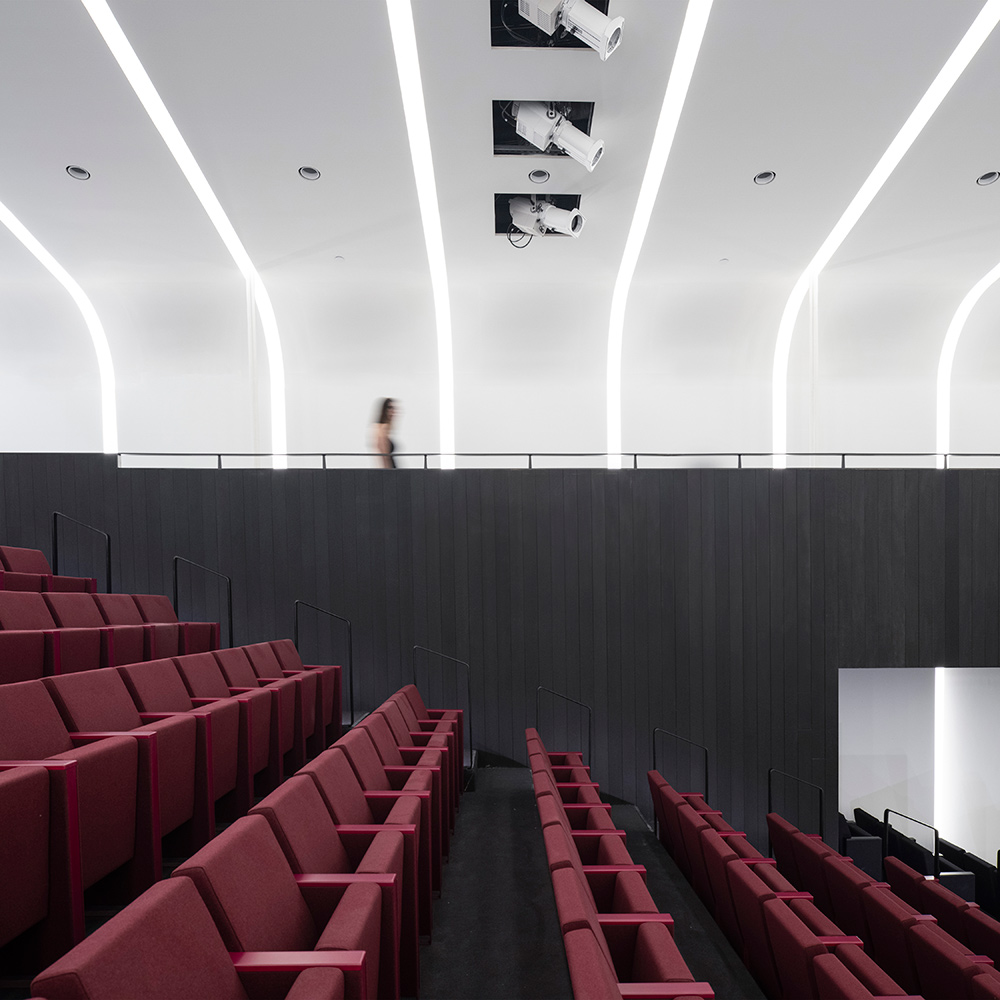Gold Winner of the International Architecture & Design Awards 2023
Architect / Designer:
Wendy Evans Joseph
Studio:
Studio Joseph
Design Team:
Designers on project:
Wendy Evans Joseph, Principal
Connie Wu, Project Manager
Wonwoo Park, Designer
Architects on Project:
Wendy Evans Joseph, Principal
Connie Wu, Project Manager
Sub Consultants
Lighting: Anita Jorgensen and Sighte Design
Structure: Hage Engineering and Silman
MEP and LEED: Plus Group
Acoustics: Jaffee Holden
Copyright:
Alex Fradkin
Country:
United States
The Brooklyn Children’s Museum is the oldest children’s museum in the United States. Founded in 1895, it is located at the intersection of a diverse group of neighborhoods. The auditorium serves its communities providing the infrastructure for a multitude of functions for children and adults. 10 years ago, budgetary, and practical challenges left the space an empty room with only concrete tiers, no finishes or services, and most critically, no plan for a fit out to meet egress code requirement.
The museum asked for 180-seats, with the capacity for film screenings, light production, musical presentations, and lectures. The need for a very broad range of programs for children as well as adults meant that the design be both mature and robust. But what made the realization of the hall possible was our creative solution to add a balcony to the space and create a secondary mean of egress at the 2nd floor level of the museum. Previously to working with us, the museum had planned direct street egress requiring a prolonged series of public reviews. The balcony solution also allowed the addition of over a dozen new seats and ADA access to the control system and a location for staff supervision.
The auditorium interior is an architecturally dynamic insertion that is aesthetically surprising and technically clever. It features GFRG panels that shingle along the walls and sloping ceiling. The space between the ribs creates light coves (with dynamic color-changing LEDs.) These LED lights have full spectrum color, can be dimmed, or programmed for dynamic effects. The GFRG, panels, hung from the existing roof trusses seamlessly integrate mechanical systems, fire safety, theatrical spots, and acoustic treatment. The architectural solution is straightforward yet, uplifting as it captures the joyful spirit of a family venue with a bold, playful design. A robust materiality and comfortable seating embrace the full latitude of the institution’s intentions.
Impact on community
Brooklyn Children’s Museum puts community first, changing the paradigm for what a museum typically offers to encompass many constituencies with diverse cultures, family traditions, and levels of financial capacity. Given changing demographics, political tensions, and social conflict, the museum is an oasis where all are welcome. The auditorium is central to increased public programming for enjoyment and education. The high quality of the lighting elements will allow for professional performance.
Design for Economy
The project is funded by public monies and managed by a public agency. So, the design team took the use of these resources seriously, aiming to make the most efficient use of the space. The all-inclusive design strategy became one of integrated, systems and ease of control to optimize ongoing energy use.
The use of wool fabrics and carpet, as well as charred wood, all renewable resources as finishes provide durability, longevity. The wool fabric is easily cleaned. Charred wood provides black coloring but is more scratch-resistant than paint.



